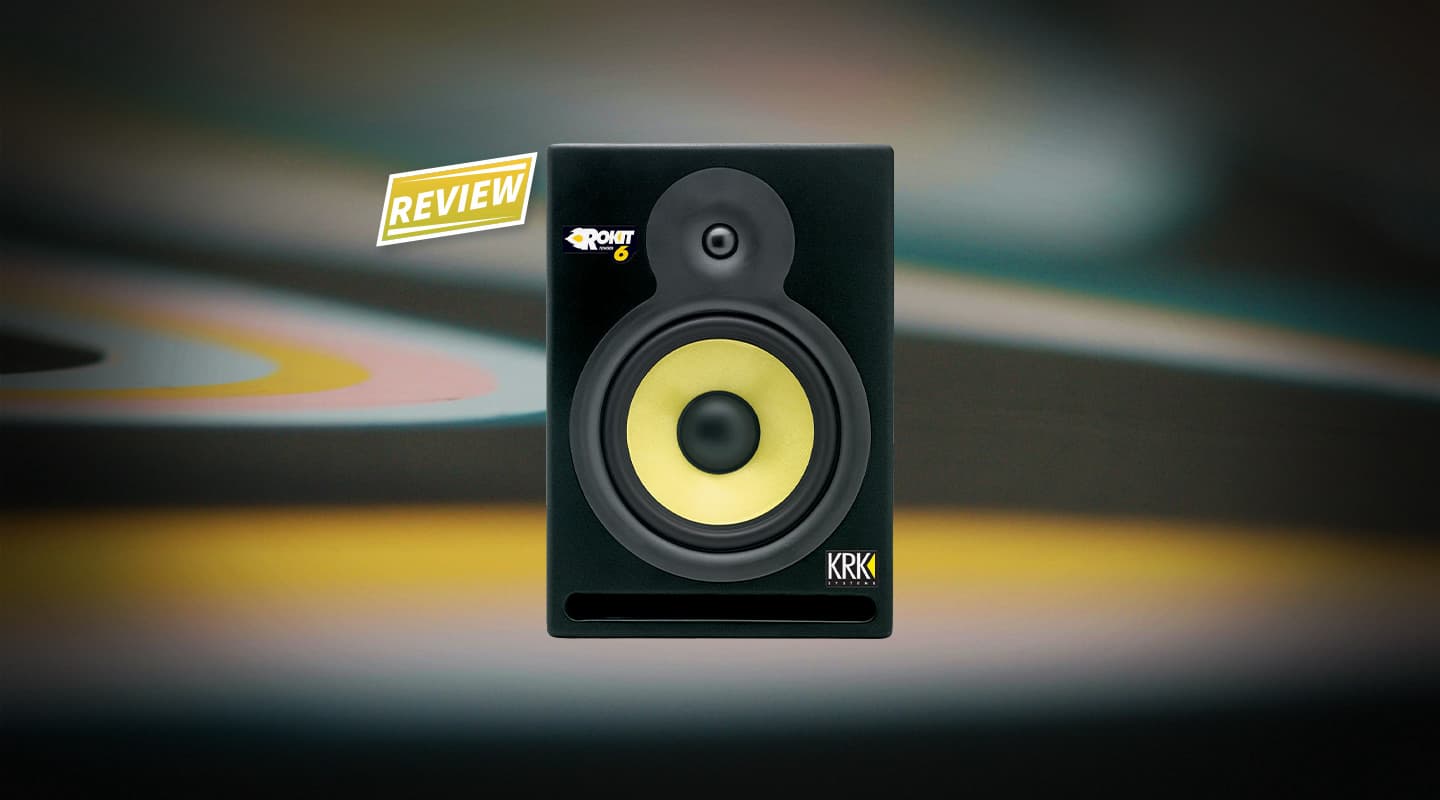
Review: KRK Rokit RP6
KRK launches new Rokit-powered monitors.
KRK has a new range of Rokits – its popular and affordable line of powered monitors. The new Rokit-powered monitors include five-, six- and eight-inch low frequency driver models, as well as a 10-inch subwoofer unit. The speaker under review here is the six-inch RP6, which also features a one-inch soft dome tweeter.
The RP6 is a compact (38cm x 27cm x 31cm) and sturdy-looking speaker with the now-familiar yellow Aramid Glass Fibre (or Kevlar as it used to be called) cone – albeit a tighter, finer weave than other KRK models. The cabinets are finished in smooth, glossy black plastic and all the edges are rounded off to minimise diffraction. Another feature they share with their more expensive relations are the bottom-mounted slotted ports. The theory behind this design is that this port shape; “reduces the port turbulence and distortion commonly found in poorly designed round ports”. And with the flaming Rokit logo on the front fascia completing the picture, these monitors subjectively look quite funky or a little tacky, depending on your taste.
After setting up the RP6s I decided to do an immediate shootout with a pair of Yamaha HS10Ms I had previously reviewed (see Issue 45) and had got to know quite well. My first impressions were: ‘hmm nice smooth top end, lots of midrange action and detail… but where’s the bottom end?’. After establishing that the Yamahas were indeed pretty pronounced in that area (and that my wiring wasn’t somehow putting the RP6s out of phase!) I next examined the back panels. A rotary control allows for continuously variable volume adjustment between –30dB and +6dB, while the high frequency can be adjusted via a four-way switch between +1dB, Flat, –1dB and –2dB shelving above 2kHz – so no additional bottom end control there. Inputs for unbalanced RCA, balanced TRS ¼-inch and balanced XLR are neatly grouped above a simple and easily accessed toggle power switch. After more careful listening I realised that there was, in fact, bottom end coming out of the RP6s, but it was extremely ‘tight’ (more lower midrange than true bass) and way less pronounced than what I had grown accustomed to with my other monitors.
To add some extra perspective to this review I was also supplied a pair of higher-end KRK V8s – so I decided to spark them up. Tonally, the V8s are not too dissimilar, though they provide a more articulate bottom end with a bit more punch in the lower midrange and better overall spatial imaging. The RP6s by comparison had a greater emphasis on the upper midrange with less clarity down low. All up, the RP6s didn’t come off too badly in comparison with the popular and well-regarded V8s.
ROKIT’S RANGE
Fast forward about six weeks and I’ve now recorded and mixed a whole bunch of documentary soundtrack work as well as quite a few other songs using the Rokit RP6s and I’ve learnt a lot more about them. I’ve found that my RP6 mixes generally translate well onto other systems and the clarity of the midrange is very useful for sorting out the majority of sounds – whether it be for troubleshooting or enhancement/sweetening. It may be my imagination but I think the Rokits have come alive a little bit more in the bass region as I’ve worn them in. This is something that regularly happens with new speakers (though not so often with bottom end). In an ideal world perhaps, mindful manufacturers and distributors should consider ‘wearing in’ their speakers somewhat before sending them out for review. In any case, I’m more confident mixing on the RP6s now than I was at first, though for the more critical lower frequency instruments, such as bass guitars and kick drums, I’m still checking things on my bass-heavy headphones (something I do anyway for a fresh perspective).
Towards the end of the review period the RP10S subwoofer arrived on my doorstep and when I fired it up in tandem with the RP6s the results were very much more to my liking. The RP10S integrated seamlessly and delivered all the low-end information I was previously missing. KRK provides a variable low-pass filter and gain control on the sub for tailoring your bass response and I found a gain setting well below parity with the RP6s, which suited my room and set-up perfectly (my only criticism here was the lack of detents on the sub gain control and a rather stiff pot).
While a lack of low frequency information was my main gripe with the RP6s, they delivered a very well-articulated and ‘biting’ mid-range which I enjoyed working with, and also a very smooth and detailed top end which did not become ear-frying during long mix sessions. The Rokits would no doubt shine on rock material of the punk and thrash variety, or, with the addition of a subwoofer, on just about anything else.
















RESPONSES